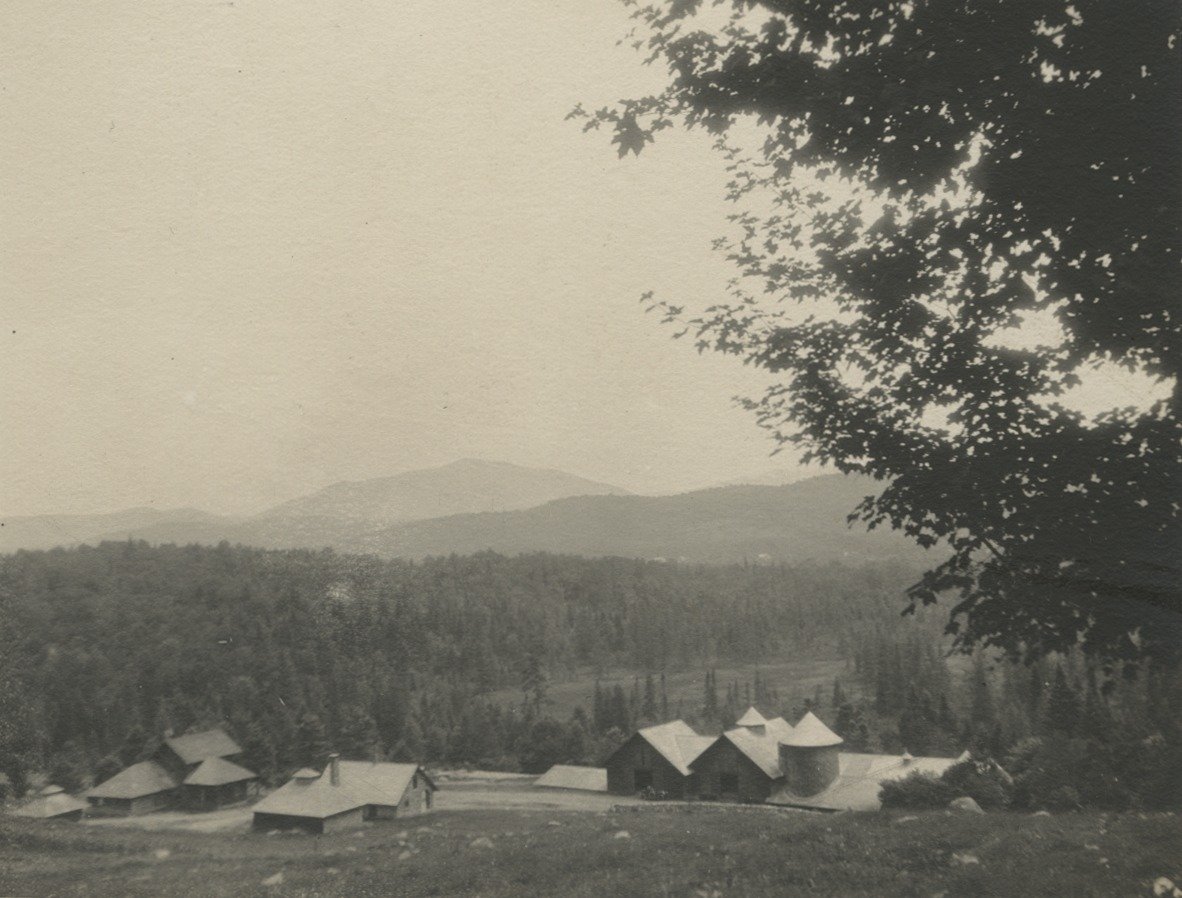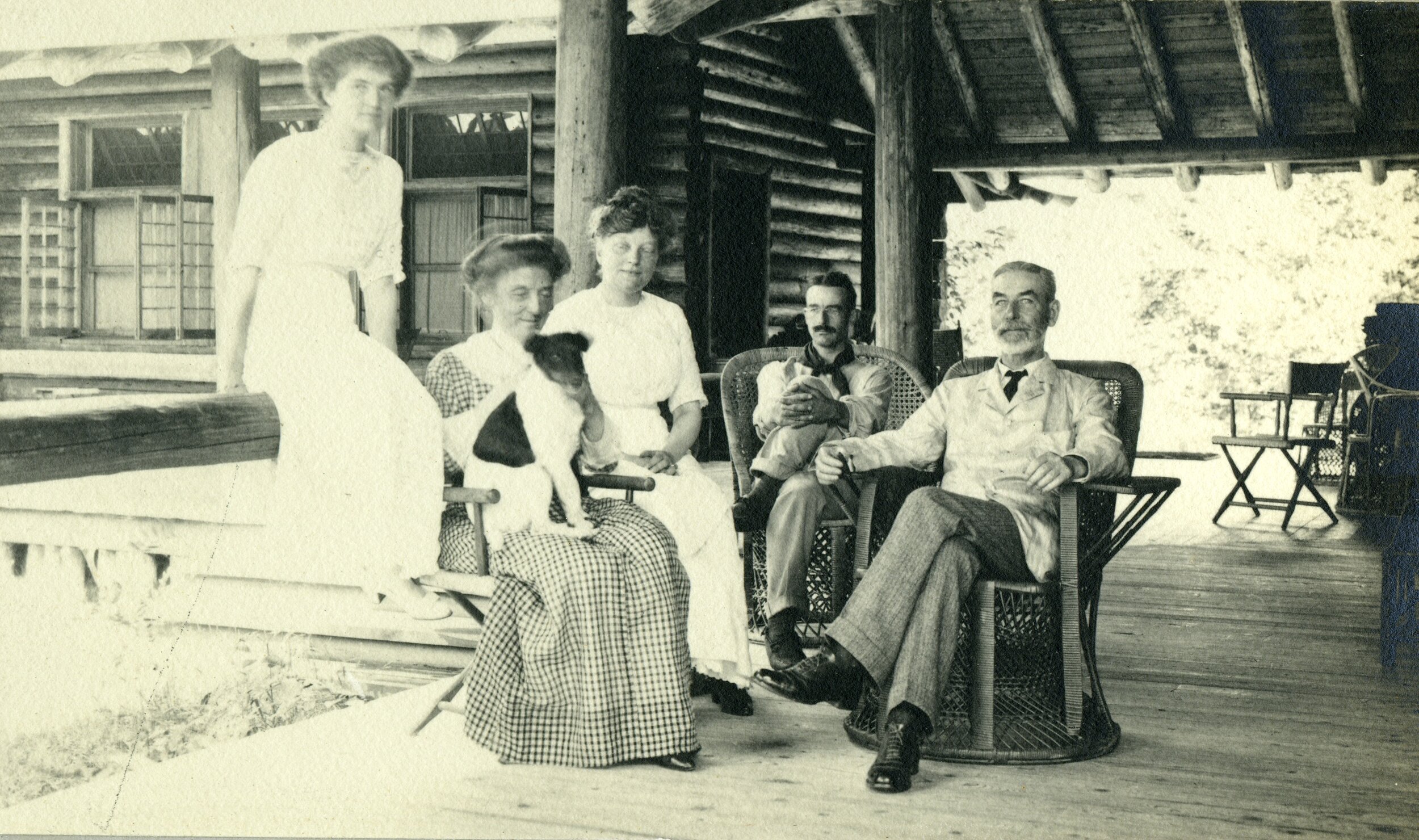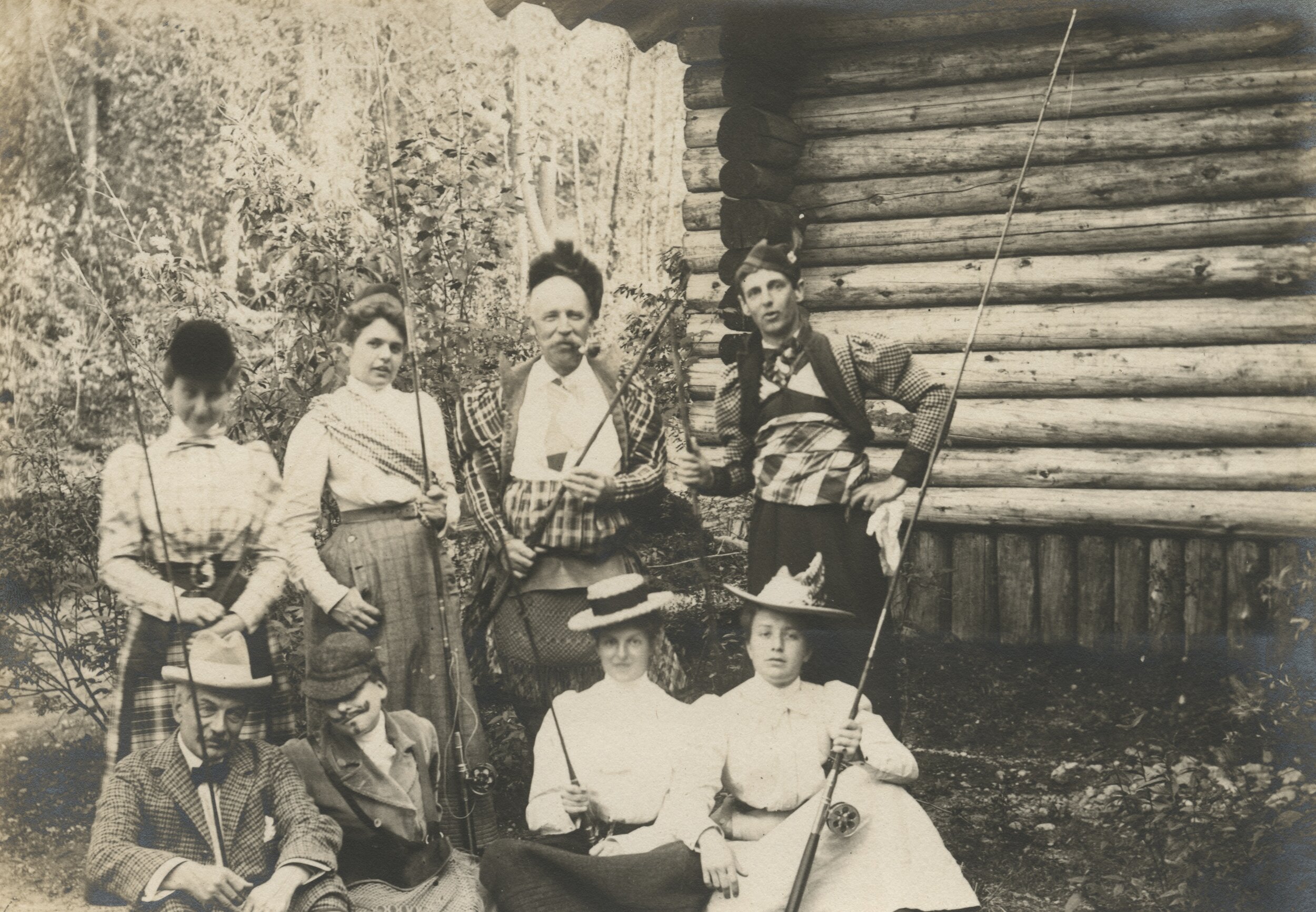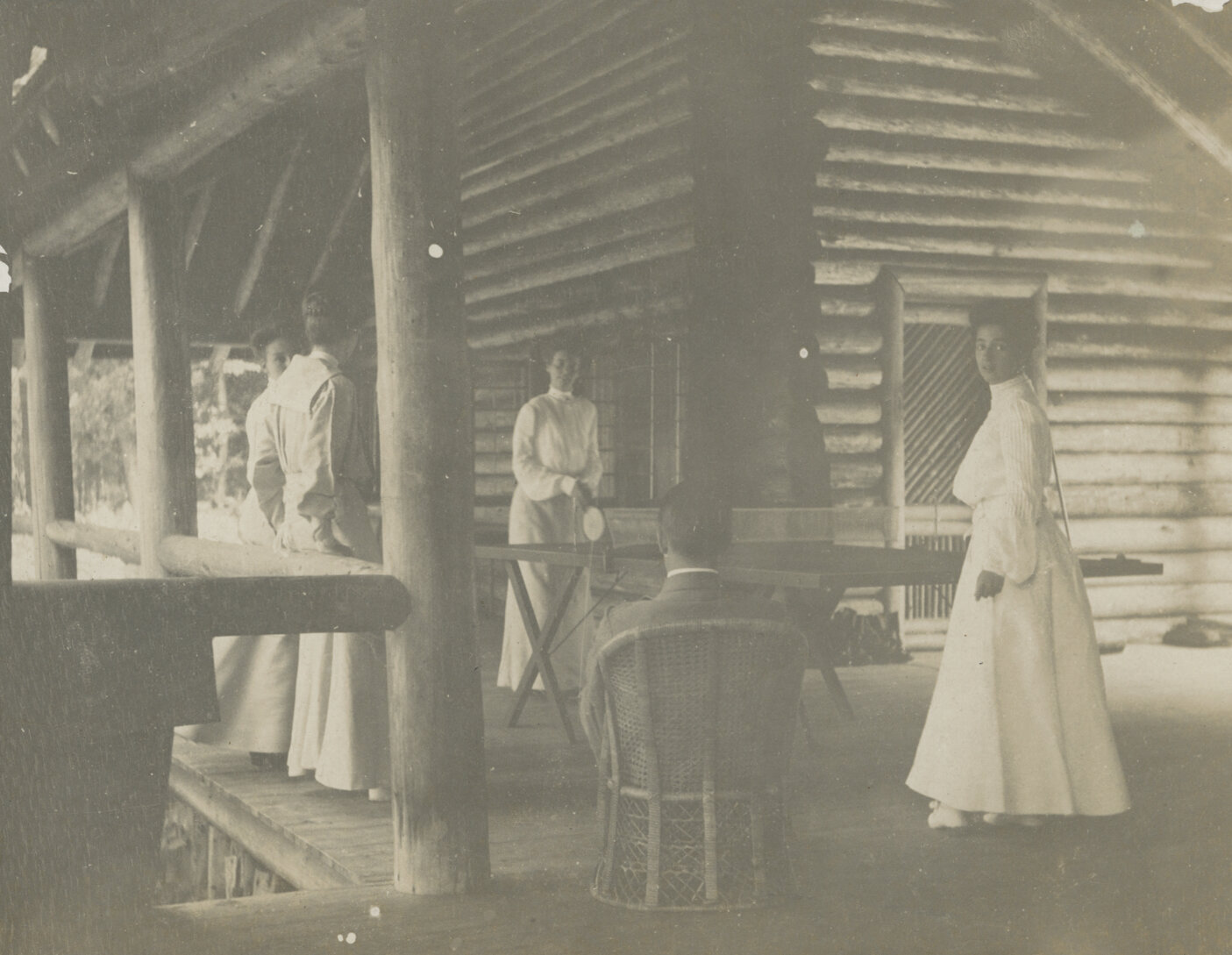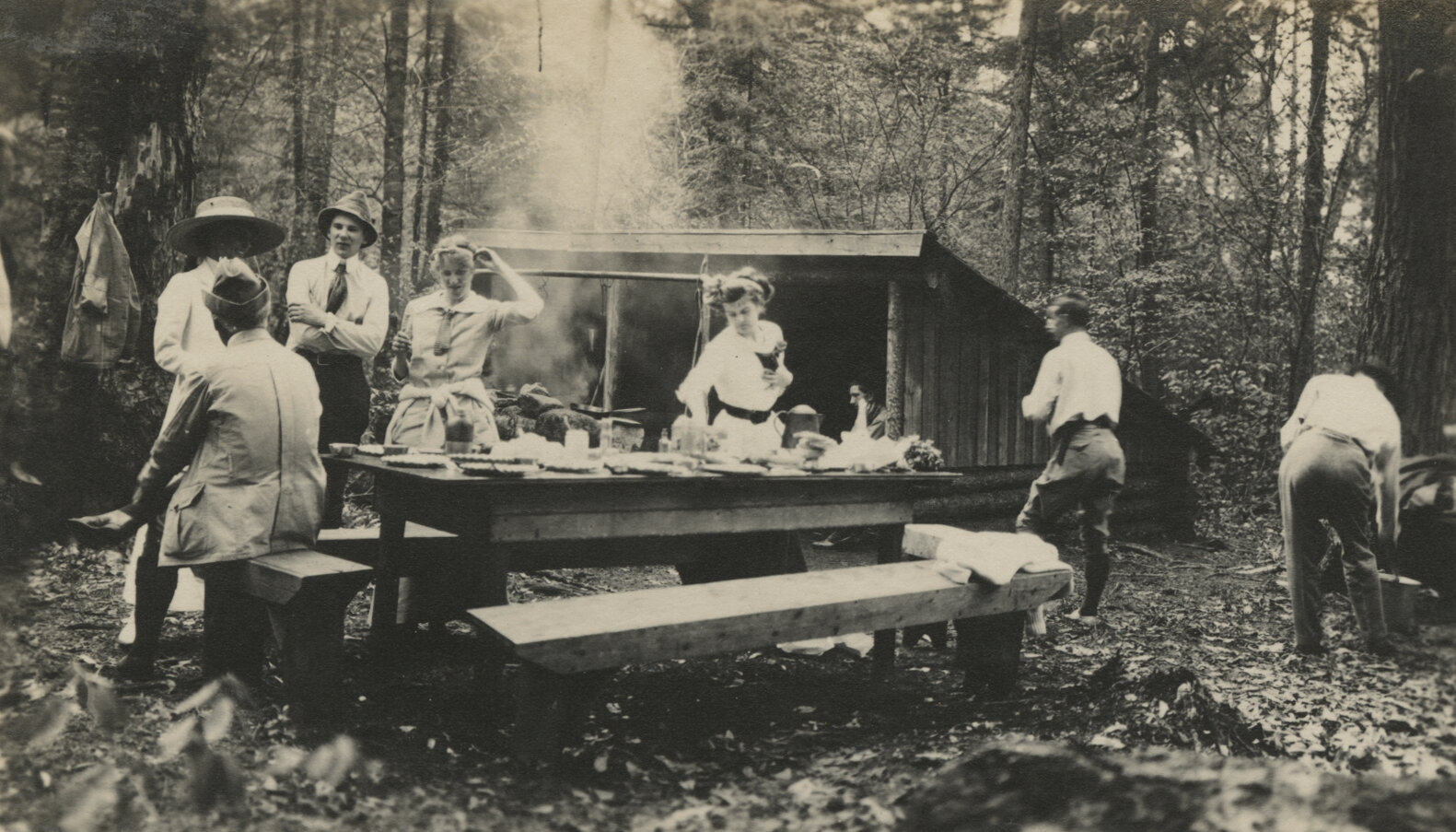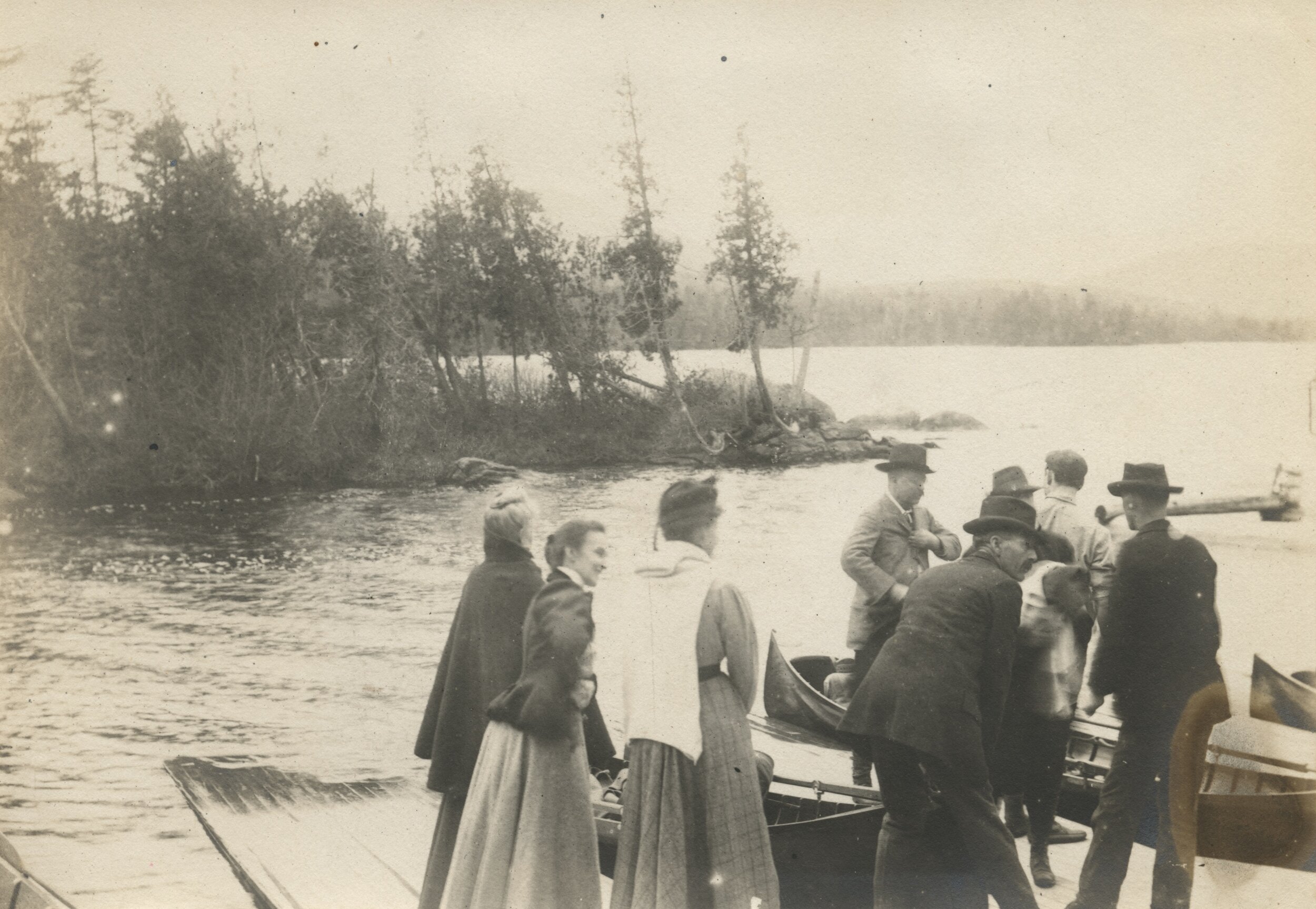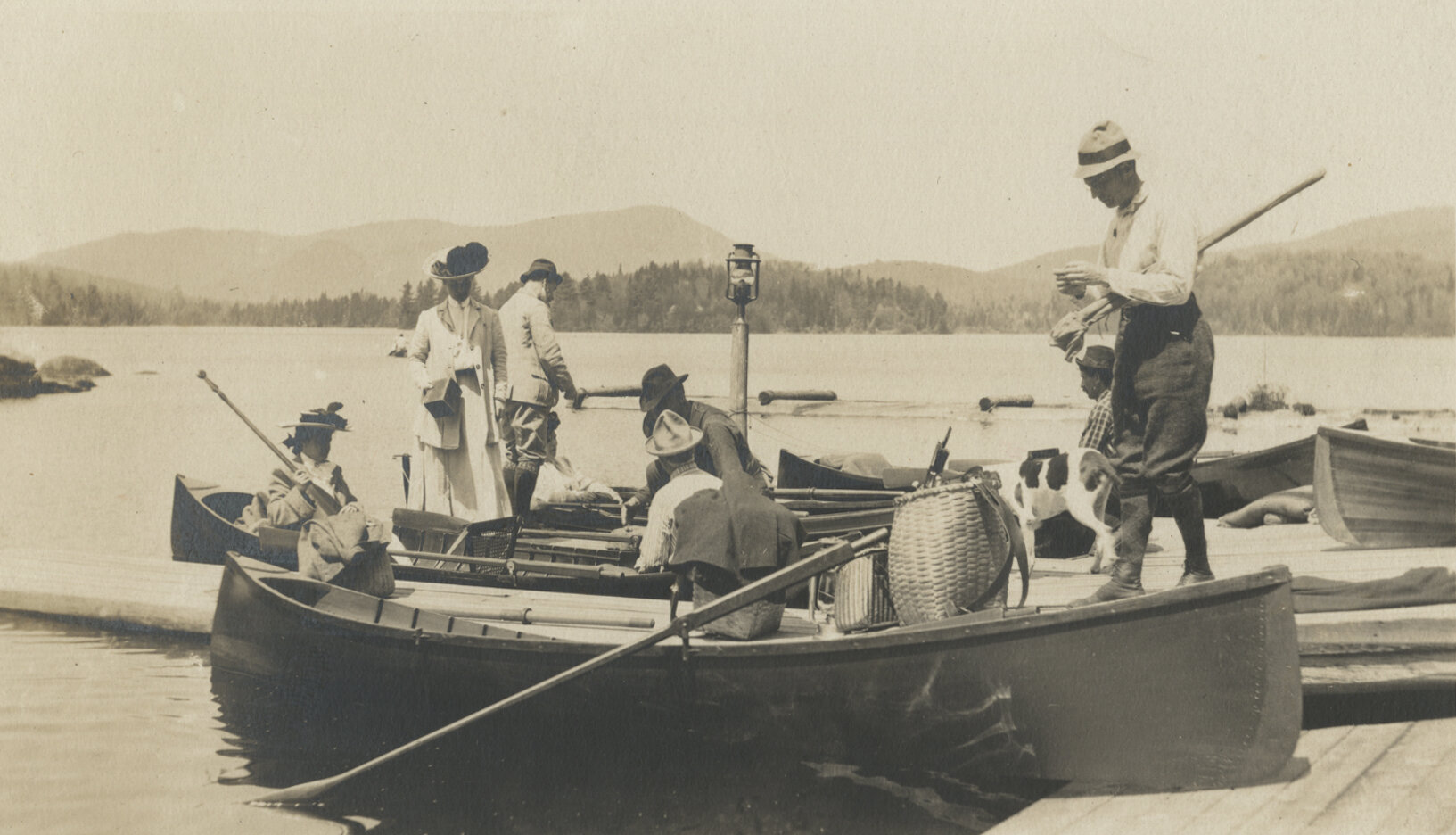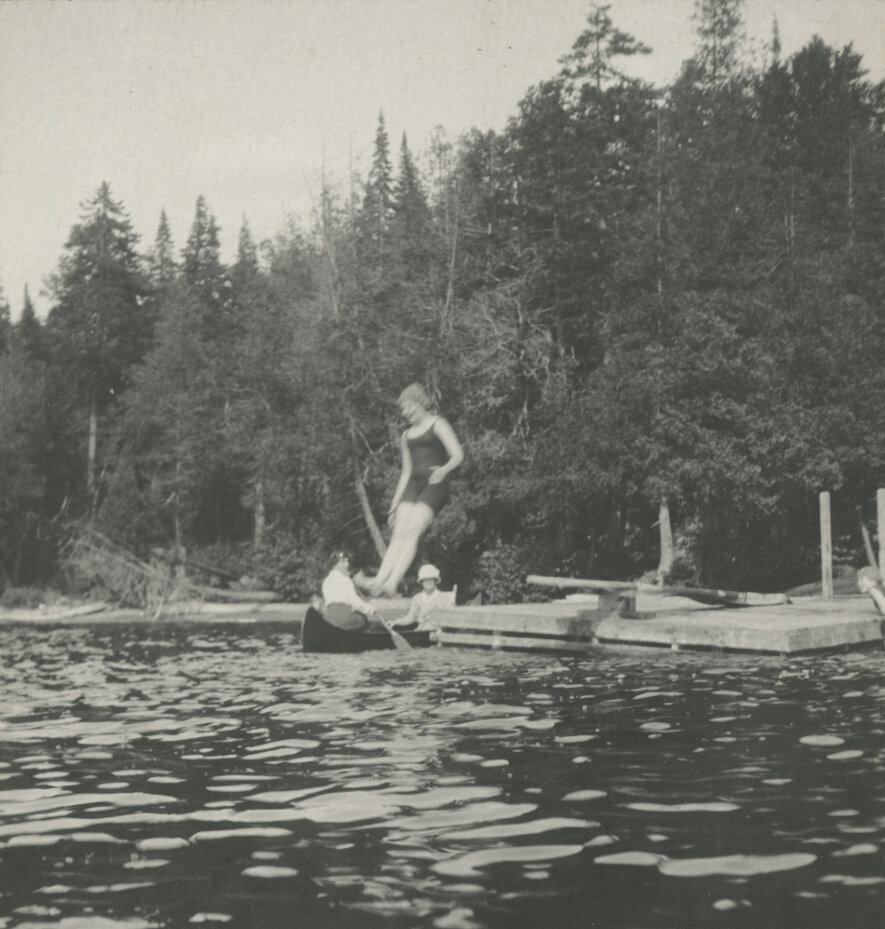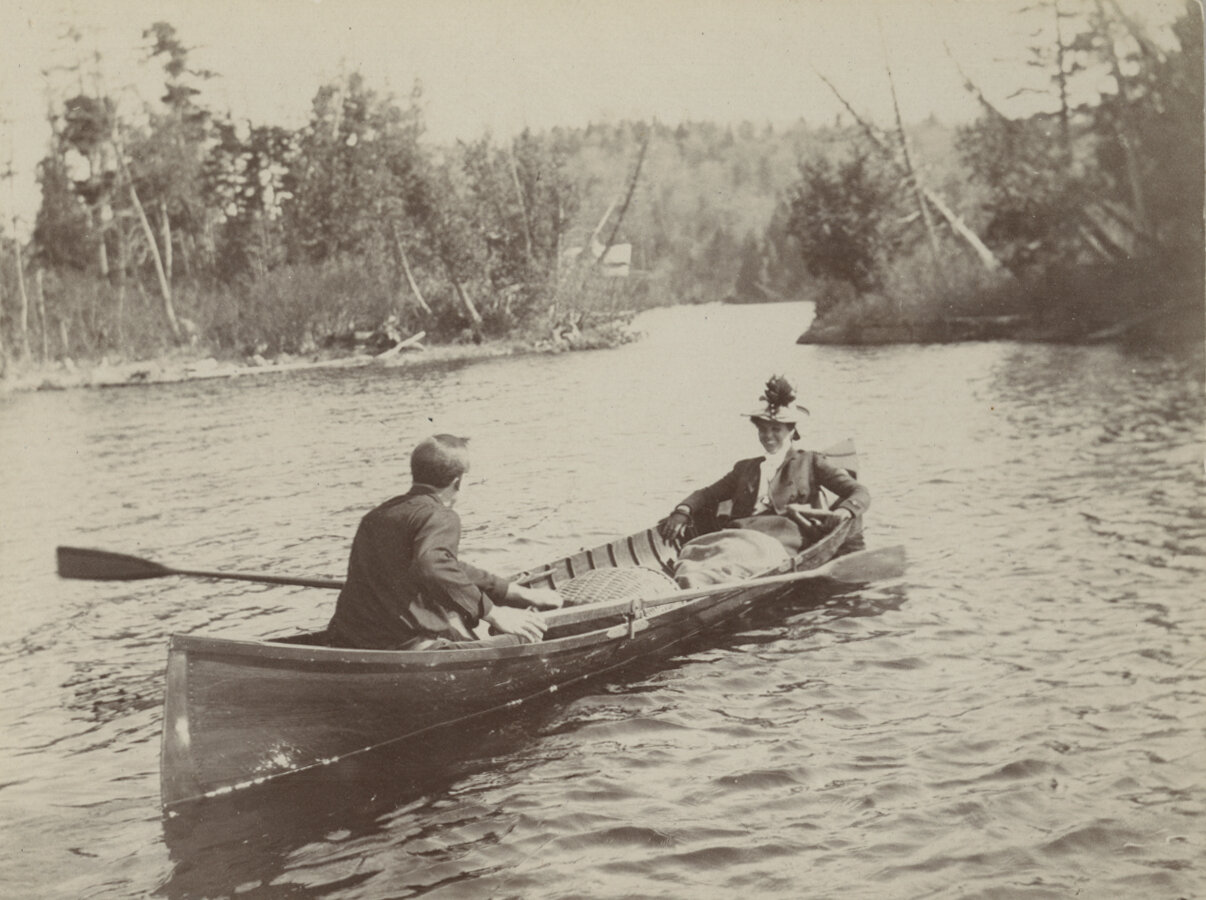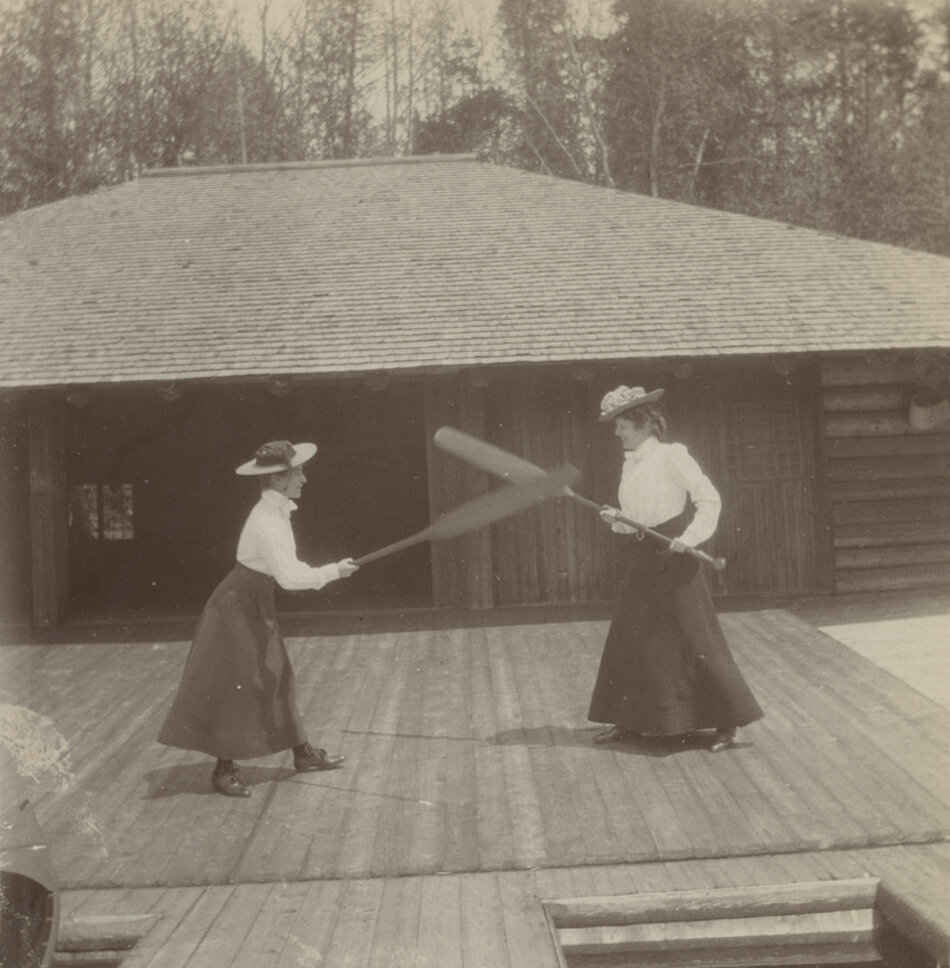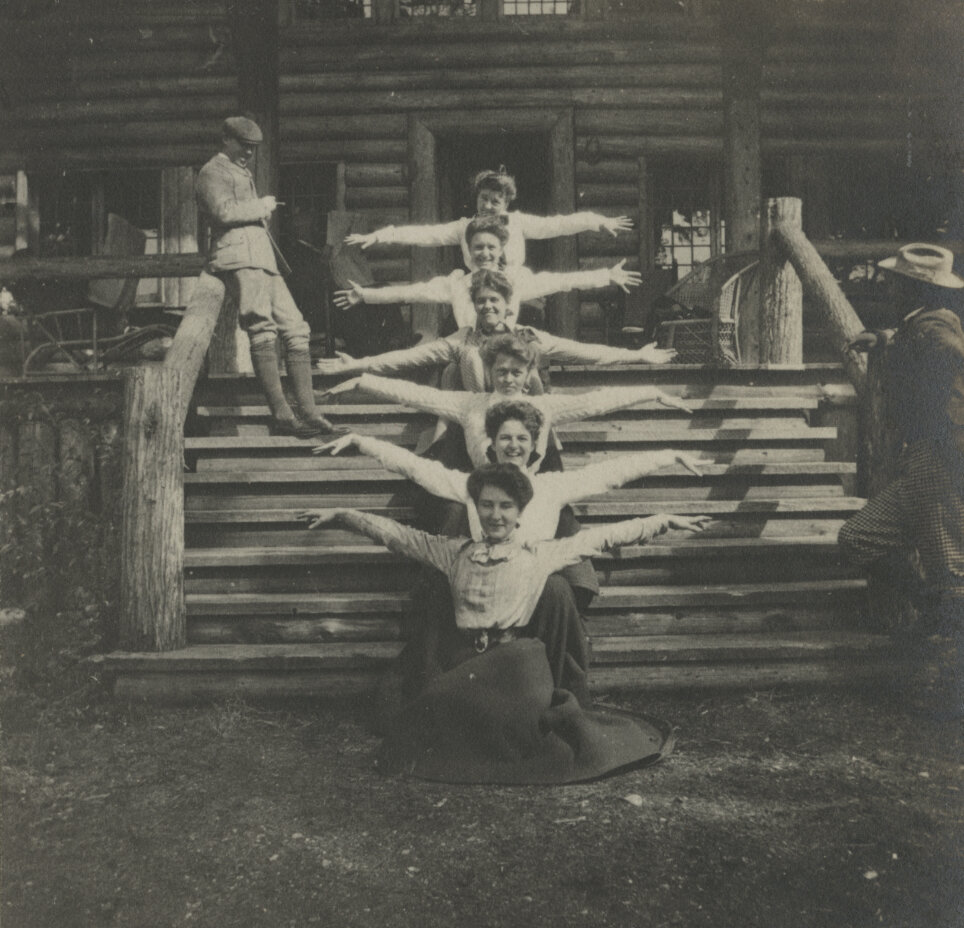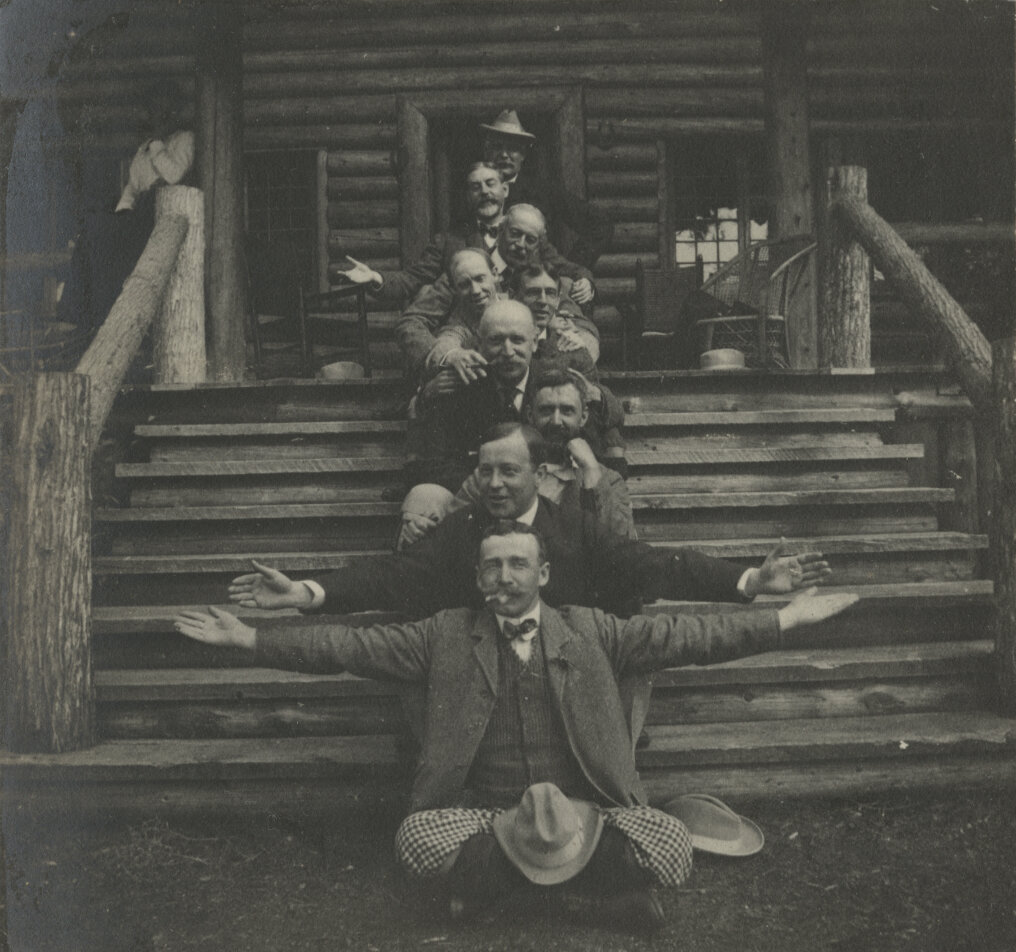The History of Camp Santanoni
Great Camp Santanoni was constructed at the advent of the 20th century, during a period when ultra-wealthy families had discovered the allure of New York’s Adirondack Mountains as a vacation destination. Many of the wealthy elite began construction of what would come to be known as “Great Camps” — luxurious playgrounds set in the natural world.
Beginning in 1890, Albany-based banker Robert C. Pruyn and his wife, Anna, accumulated nearly 13,000 acres surrounding Newcomb Lake in the Adirondacks and set to work planning the family retreat. Anna was an avid outdoors enthusiast and wanted wilderness getaway where she could escape the busy life of Albany. Robert wanted a something more akin to an English “country estate.”
Construction of the Main Camp using native materials in the 1890s.
The resulting compromise was revealed in the Main Camp, which was designed by architect Robert H. Robertson and built from locally-forested spruce trees. The structure features more than 5,000 square feet of porches facing the lake — along with a Japanese architectural influence rarely seen in the area. (Pruyn spent several years as a young man living in Japan with his father, who was Abraham Lincoln’s minister to Japan, and developed an affinity for Japanese architecture.) With accommodations available for both family and friends, the camp served as a hub for Anna’s beloved outdoor activities, including swimming, boating, and hiking.
A few years after the Main Camp was completed, in 1896, construction began on the 300-acre Farm complex, some three and a half miles from the Main Camp. For this project, Robert Pruyn enlisted renowned farm designer Edward Burnett of Southborough, Mass., to make the farm as self-sufficient as possible. The result was an inventory of crops and livestock bred to survive the notoriously harsh weather conditions of the Adirondack Mountains. The Santanoni Farm had an apple orchard and large vegetable garden, and was home to a variety of livestock, including pigs, chickens, and dairy cows.
The Santanoni Farm.
Construction of the last of the Camp’s building complexes, the Gate Lodge complex, was completed by 1906. Designed by the architectural firm Delano and Aldrich, this complex marked to weary travelers to Santanoni that they had at last arrived.
The Pruyn family owned Camp Santanoni for much of the first half of the 20th century. After the deaths of Robert C. and Anna Pruyn in the 1930s, however, its use among the Pruyn family began to dwindle, and it ultimately became too expensive for the surviving Pruyns to maintain. So, in 1953, the Pruyns sold the Camp to the Melvin family of Syracuse.
For the next 20 years, the Melvins for the most part used and maintained the property as the Pruyns did, as a wildeness getaway. Tragedy struck, however, in 1971, when eight-year-old Douglas Legg, a member of the Melvin family, disappeared during a stay at Santanoni. A widespread search turned up no trace of Douglas.
In 1972, the Melvins sold the entire property — nearly 13,000 acres — to the Adirondack Conservancy Committee of The Nature Conservancy, which then transferred to property to the state of New York to be added into the State Forest Preserve.
Learn more about the history of Camp Santanoni as a publicly owned site here.


